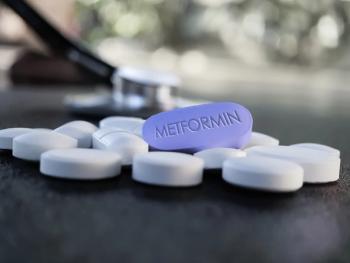
Increased risk of preterm birth associated with opioid exposure during pregnancy
A new study found that opioid morphine milligram equivalents dose prescribed in the 60 days prior to delivery date was significantly associated with a higher likelihood of spontaneous preterm birth.
Pregnant patients who take prescription opioids for pain management during pregnancy have an increased risk of spontaneous preterm birth, according to new data published in the journal JAMA Network Open.1 Investigators say the findings support prescribing the lowest opioid dose necessary during pregnancy.
While pain management is common during pregnancy, clinicians are limited in what pharmacological treatments they can use due to potential fetal risks. Opioids have become a primary treatment for pain during pregnancy, with research suggesting up to 21% of pregnant patients use opioids at some point during pregnancy. However, opioid exposure on certain perinatal outcomes is not well understood.
“Multiple studies have reported an association between opioid exposure during pregnancy and preterm birth, although the mechanism of this association is poorly defined,” the authors wrote. “Importantly, previous studies on prenatal opioid exposure have not distinguished between indicated and spontaneous preterm birth, which impacts clinicians’ ability to adequately counsel patients about the potential risks of opioid use, especially sporadic use, during pregnancy.”
A team of investigators from Vanderbilt University and the Vanderbilt University Medical Center conducted a study to examine the association between prescription opioid exposure during pregnancy and spontaneous preterm birth. Data was gathered from a retrospective cohort study of pregnant patients enrolled in Tennessee Medicaid. Researchers looked at enrollment files and linked them to health care encounters, hospital discharge information, birth certificate data, and prescription fills.
The study cohort included 251087 patients, of which 25391 had spontaneous births and 225696 were matched controls. The participants were pregnant peoples between the ages of 15 to 44 who gave birth to a single fetus at 24 weeks gestation or greater between 2007 and 2019. Birth were considered likely spontaneous if they occurred between 24 weeks 0 days and 36 weeks 6 days with premature rupture of membranes, prolonged or precipitous labor, a use or attempted use of forceps or a vacuum, and no induction for delivery.
The primary study outcome was spontaneous preterm birth as determined by a validated algorithm using birth certificate data. A model was used to estimate the association between spontaneous preterm birth and total opioid morphine milligram equivalents dispensed.
READ MORE:
Investigators found that opioid morphine milligram equivalents dose prescribed in the 60 days prior to the delivery date was significantly associated with a higher likelihood of spontaneous preterm birth. Each doubling of nonzero opioid morphine milligram equivalents was associated with a 4% increase in the odds of spontaneous preterm birth. For example, a 450 morphine milligram equivalents opioid prescription is associated with a 16% increased odds for spontaneous preterm birth compared with no opioid exposure.
Additionally, the estimated odds for spontaneous preterm birth did not substantially vary by opioid type.
“In this case-control study, a positive association was found between total
Study limitations include that only opioids dispensed to patients could be described and not actual use, a lack of data on nonprescription analgesics used in pregnancy, that only births occurring at 24 weeks or greater were examined, and that only individuals enrolled in a Medicaid program were observed.
“We also caution against the conclusion that lower doses especially those below 100 MME are safe; the confidence bands over the low dose range still include odds ratios that are consistent with meaningful harm,” the authors concluded. “More research would be required to determine confidently that lower dose opioid prescribing is not associated significantly with spontaneous preterm birth.”
This article was originally published by our sister publication Drug Topics.
Reference
1. Bosworth OM, Padilla-Azain MC, Adgent MA, et al. Prescription Opioid Exposure During Pregnancy and Risk of Spontaneous Preterm Delivery. JAMA Netw Open. 2024;7(2):e2355990. doi:10.1001/jamanetworkopen.2023.55990
Newsletter
Get the latest clinical updates, case studies, and expert commentary in obstetric and gynecologic care. Sign up now to stay informed.










